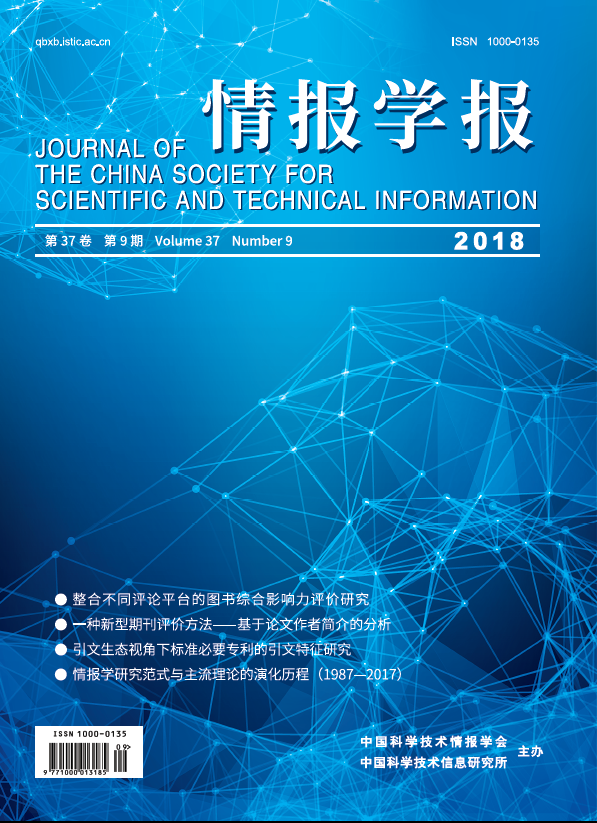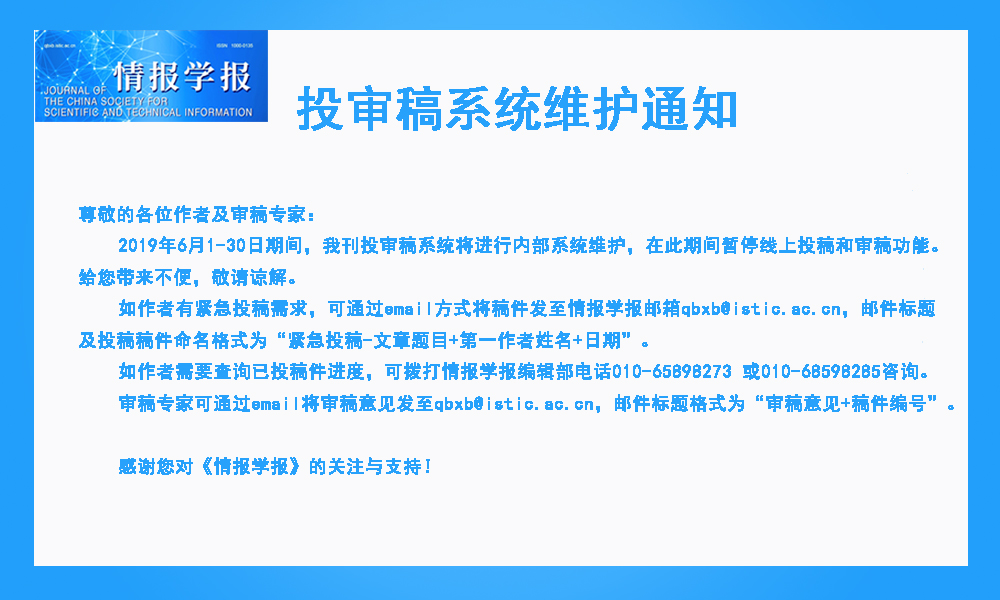 |
|
2018 Vol. 37, No. 9
Published: 2018-09-24 |
|
|
| |
|
|
|
|
|
861 |
Combing Multiple Platforms of Online Reviews to Measure the Comprehensive Impact of Books |
|
 |
Zhang Chengzhi, Tong Tiantian, Zhou Qingqing |
|
|
DOI: 10.3772/j.issn.1000-0135.2018.09.001 |
|
|
Currently, online book reviews are abundant and widely available on e-commerce and social network websites. Mining these reviews is important for comprehensively evaluating books and persuading customers to make purchasing decisions. However, most prior research based on book reviews mainly focused on a single review platform instead of using review data from multiple platforms, resulting, to some extent, in a one-sided evaluation. Hence, based on the quantitative analysis of book reviews across different platforms, we put forth one method to measure the comprehensive impacts of books utilizing multi-source data, which provides fresh ideas for book evaluation by collecting and integrating book reviews from social networking platforms and e-commerce websites. In this study, by taking 348 books in four subjects as an example and integrating multi-source reviews of them from an aspect perspective, we analyzed the differences between book evaluation results obtained through different integration strategies. In the end, a comparison between the results obtained by our method and traditional methods based on a single platform shows that combing multiple reviews can evaluate a book’s impact more comprehensively and avoid the limitations of traditional methods. |
|
|
2018 Vol. 37 (9): 861-873
[Abstract]
(
301
)
HTML
(1 KB)
PDF
(644 KB)
(
2419
) |
|
|
|
882 |
Study on Citation Characteristics of SEP from an Ecological Perspective |
|
 |
Li Rui, Zhou Wei, Wang Xue |
|
|
DOI: 10.3772/j.issn.1000-0135.2018.09.003 |
|
|
Standard essential patents (SEP) This abbreviation can be removed from here as this does not appear again in the abstract. are patents contained in industry technical standards, i.e., if a patent is not used, the technical standards will not be enforced. In order to meet the industry technical standards, enterprises must obtain the license of standard-essential patents. Therefore, standard essential patent information is an important competitive intelligence. Based on the analysis of Qualcomm’s patent samples, this paper summarizes the citation characteristics of standard essential patents that differ from ordinary patents, and tests the repeatability of the features found by Huawei and ZTE’s patent samples. Finally, it was found that The use of this word in this context seems inappropriate. Please see if this can be replaced with “results indicate” or “It was found that”the citation characteristics of standard essential patents are analysis and interpretation from the perspective of citation ecology. This paper also aims to provide references based on citation features for patent intelligence workers to identify and foresee “potential” future standard essential patents. |
|
|
2018 Vol. 37 (9): 882-889
[Abstract]
(
242
)
HTML
(1 KB)
PDF
(366 KB)
(
721
) |
|
|
|
890 |
Visualization of Sequential Characteristics of Web Behaviors of College Students |
|
 |
Yan Chengxi, Wang Jun |
|
|
DOI: 10.3772/j.issn.1000-0135.2018.09.004 |
|
|
In the information dependent environment, research on web behaviors is an important topic with widespread needs, especially concerning the analysis and research of online behaviors of college students. College students are an important core group and a new force among Chinese netizens. There is great practical significance and social value to exploring and grasping Chinese college students° characters such as user behavior, interests, and needs. Visual analysis can directly display the overall distribution characteristics of user behavior and lay the foundation for further in-depth analyses. In this study, the college students° network access logs are considered as the analysis object to indicate the features of group behavior under multiple time granularities, namely, term, week, and hour. Meanwhile, on the basis of research using Markov chain, Gini-index, H-index, and other feature indicators, this work attempts to reveal college students° online characters of sequential behavior, user interest, and needs in various hour intervals, which provides a scientific reference to understand the nuances of college students' online life and support enterprise personalized services under the big data environment. In particular, H-index is applied to the website ranking algorithm of user interest and shows the value of classical informetrics analysis in the process of analysis and application of online user behavior, thus promoting the integration of different methods in applied information science. |
|
|
2018 Vol. 37 (9): 890-904
[Abstract]
(
335
)
HTML
(1 KB)
PDF
(2392 KB)
(
1575
) |
|
|
|
905 |
Research on Optimization of Scientific Literature Similarity Calculation Based on the Co-citation Feature |
|
 |
Han Qing, Zhou Xiaoying |
|
|
DOI: 10.3772/j.issn.1000-0135.2018.09.005 |
|
|
Calculating similarity for scientific literature is the basis of applications such as literature search and literature analysis, and the results have a direct impact on the final effectiveness of the related applications. The co-citation information is an important feature that is different from that of ordinary text. It can effectively represent the correlation between two text inputs. Further, it can be used to improve the validity and reliability of literature similarity calculation. Based on the vector space model, semantic features and co-citation features are introduced into the literature similarity calculation, and a hybrid model is proposed to optimize the similarity calculation of scientific literature. Through the verification of seven research fields, such as university library, online public opinion, and information quality, the results show that the proposed model can make full use of the co-citation features of scientific literature, and thus compensate for the problem of insufficient features in the vector space model and improve the overall performance of scientific literature similarity calculation. |
|
|
2018 Vol. 37 (9): 905-911
[Abstract]
(
481
)
HTML
(1 KB)
PDF
(496 KB)
(
961
) |
|
|
|
912 |
Study of Online Healthy Community User Profile Based on Concept Lattice |
|
 |
Zhang Haitao, Cui Yang, Wang Dan, Song Tuo |
|
|
DOI: 10.3772/j.issn.1000-0135.2018.09.006 |
|
|
In this work, the user profiles of online health community users were constructed based on concept lattice to reveal the multidimensional features and behavioral rules of different types of user groups in different contexts. Thus, providing the basis for optimizing community services. Python was used to obtain user data of online health community diabetes circle. Further, an online healthy community user profile concept model was constructed taking three aspects into account: user requirements, user roles, and user behavior. ConExp1.3 tools were used to build user segmentation tag concept lattices, and the user groups were divided into three categories using Hasse diagrams to construct the community group user profiles. Mining association rules were used to identify the behavior of the group users in different situations and obtain a complete picture of the user profiles. Clustering using concept lattices can rank the attributes of each group in a hierarchical manner, thereby making it easy to mine the associations between user attributes. This method has distinct advantages in constructing comprehensive and accurate user group profiles. Hence, serving the community through understanding user groups in depth and ensuring accurate services. |
|
|
2018 Vol. 37 (9): 912-922
[Abstract]
(
380
)
HTML
(1 KB)
PDF
(2977 KB)
(
2175
) |
|
|
|


